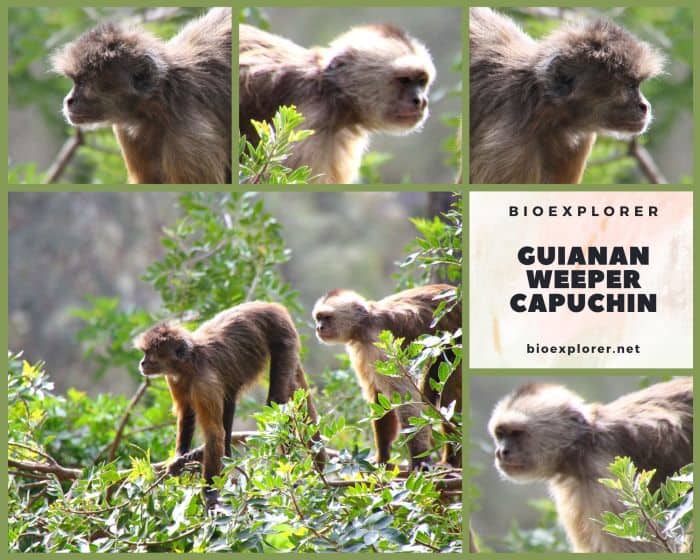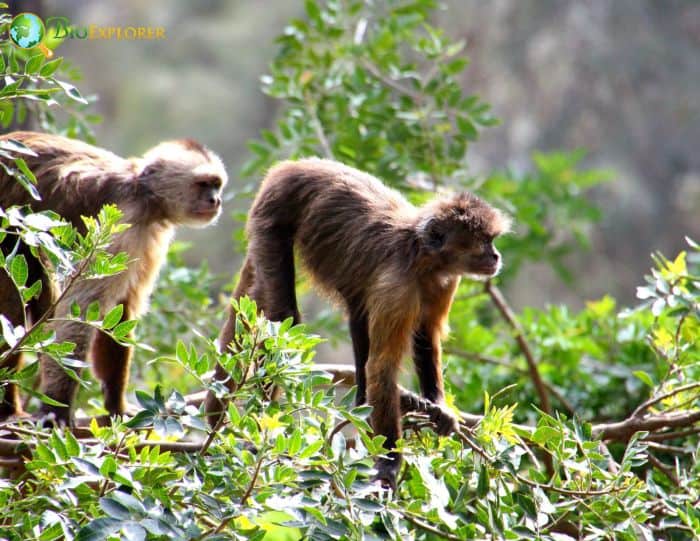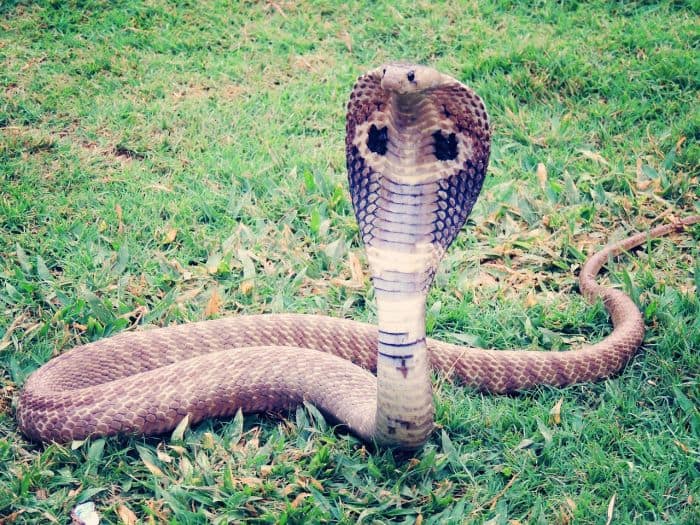
| Animalia | Primates | Cebidae | Cebus | Cebus olivaceus |


- Common Names: Guianan Weeper Capuchin, Wedge-capped Capuchin
- Taxonomy Classification Year: 1848
- Monkey Size: 60.5 to 112 cm (23.82 to 44.09 in)
- Skin Color(s): Light brown
- Habitat: Forest, rainforest, mountains
- Diet: Omnivorous
- Native Countries: Brazil, Guyana, Venezuela
Guianan Weeper Capuchin Distribution
Guianan Weeper Capuchin Characteristics

The wedge-capped capuchin[1] (Cebus olivaceus), also known as Guianan weeper capuchin, is a capuchin monkey (New-world) native to South America.
- The wedge-capped capuchins are the same size as small dogs, around 50 cm long.
- The tail of this species is semi-prehensile and about the same length as the body, giving a total length of about 84 cm.
- Males and females usually weigh between 2.5 and 2.8 kg, but males can weigh up to 800 grams more.
- The body is mainly cream to pale beige. The head is the same color as the body but has a black to dark gray wedge-shaped patch extending across the skull from the forehead.
- The forearms also feature this dark black to gray color. The tail has a black tip and is often curled at the end.
- This “ring tail” is powerful enough to support the entire body weight for long periods and is sometimes used when feeding to free up the hands.
What Eats Guianan Weeper Capuchins?

Cobra (Serpentes), Esquilo (Rodentia) and Humans (Homo sapiens) predate on Guianan Weeper Capuchins[§].
Guianan Weeper Capuchin Facts
- Wedge-capped capuchins get their name from a black triangle of dark fur centered on their forehead.
- Female species are the primary caregivers. The male species may spend time searching for food for the female but hardly invests in parental care.
- In captivity, these capuchins can live up to 55 years. However, they live an average of 34 to 36 years in the wild.
- These species do not display territorial behavior in mating systems but do compete for food and water resources with troops of capuchins from outside, as well as other Cebid monkeys.
- They seem to have a particular affinity for a centipede, which releases a venom that is believed to act as an insect repellant for these capuchins.
Suggested Reading: Types of Monkeys with Names
Cite This Page
APA7MLA8Chicago
BioExplorer.net. (2025, May 28). Guianan Weeper Capuchin. Bio Explorer. https://www.bioexplorer.net/animals/mammals/monkeys/guianan-weeper-capuchin/.
BioExplorer.net. "Guianan Weeper Capuchin" Bio Explorer, 28 May 2025, https://www.bioexplorer.net/animals/mammals/monkeys/guianan-weeper-capuchin/.
BioExplorer.net. "Guianan Weeper Capuchin" Bio Explorer, May 28 2025. https://www.bioexplorer.net/animals/mammals/monkeys/guianan-weeper-capuchin/.











